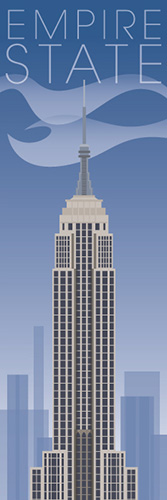
Bigstock is pleased to announce that we are now open to editorial illustration and vector submissions!
What is an Editorial Image?
An image labeled as “Editorial Use Only” on Bigstock (an “editorial image”) is an image that cannot be used to advertise or promote a product or service. The people, objects or places in editorial images are not released for commercial use.
An editorial image can be used to illustrate newsworthy and current events. It can also be used to illustrate subjects of human interest, including: the arts, business, culture, health and fitness, lifestyle, social events, technology and travel.
An image that fails to meet the criteria for commercial use isn’t always acceptable as an editorial image. For example, an image showing a recognizable person, but which does not have a model release, is not automatically accepted for editorial use. Rather, an editorial image should depict a specific subject that could be the topic of a news story or piece of commentary.
What Can Customers Use Editorial Image For?
An editorial image’s use is limited to non-commercial uses. Proper use of an editorial image includes using the image to illustrate news, commentary, or opinion in newspaper or magazine articles, blog or website posts, or in non-commercial multimedia presentations (such as film).
What are the Guidelines for Editorial Illustrations and Vectors?
Generally, the same subject restrictions for photographs also apply to JPG illustrations and vectors (including 3D renderings).
In general, if a certain subject is restricted for commercial use, but may be submitted for editorial use, we will now accept editorial illustrations/vectors which depict these subjects.

For example, a photograph featuring the Empire State Building in isolation will not be accepted for commercial use. However, the photograph may be submitted for editorial use with a proper caption.
Similarly, an illustration/vector featuring the Empire State Building in isolation may not be accepted for commercial use. However, such an illustration or vector could be submitted for editorial use with a proper caption.
An example of a caption for the acceptable editorial illustration would be:
May 10, 2014: Illustration of the Empire State Building, which is located in New York City.
Another example: We do not accept flat scans of banknotes for either commercial or editorial use. Similarly, we would not accept an illustration/vector which is a realistic, head-on depiction of a banknote for either commercial or editorial use.
In addition, there are two main guidelines:
1) We will only accept illustrations of currently elected public officials. We will not accept illustrations of celebrities.
Cartoons and caricatures can be valuable editorial content which can creatively illustrate newsworthy and current events.
However, we will only accept cartoons or caricatures of elected public officials. We will not accept cartoons or caricatures of celebrities. We will review these illustrations on a case by case basis.
For example, we would be able to accept an illustration of President Barack Obama for editorial use as he is an elected public official.
If the image is created using a reference image (to which you must own the copyright), please submit the reference image along with your submission. For more information about reference images, please see this article.
Please note that we will not accept any content which is defamatory, offensive, or sexual in nature, and all submissions will be reviewed on a case-by-case basis.
An example of a caption for the acceptable editorial illustration would be:
May 5, 2014: A vector illustration of a portrait of President Obama on a red background.

2) We will not accept logos/trademarks in illustrations, unless it is incidental to the illustration. We will not accept vectors with any logos/trademarks.
For example, we may consider an illustration of a city scene where there are incidental trademarks or logos in the image. We will review such submissions on a case-by case basis. However, we would not accept an illustration or vector with an isolated trademark or logo. We would also not accept a vector version of a city scene with incidental trademarks or logos.

Why the distinction between illustrations and vectors? The reason is simple: we do not want to make logos/trademarks available in a way which could be potentially misused. Specifically, a vector can be altered and manipulated in a way that illustrations cannot be, and therefore we are limiting the acceptance of logos/trademarks in vectors.
Vectors:
- Isolated trademark/logo: Not allowed
- Incidental trademark/logo: Not allowed
JPG Illustrations:
- Isolated trademark/logo: Not allowed
- Incidental trademark/logo: Approved on a case-by-case basis
Captions for Editorial Illustrations
Captions for editorial illustrations should adhere to the general format for editorial captions:
MONTH DAY YEAR (of creation): [Type of content, factual description of the image content and what the image portrays. If the image shows a building or landmark, include the location of the building or landmark].
Ex: May 10, 2014: Illustration of the Empire State Building, which is located in New York City.
Ex: MAY 13, 2014: A vector illustration of a portrait of President Obama on a red background.
Please include the content type (e.g., illustration or vector), and be as factual as possible when describing the image.
As always, if you have any questions regarding this new policy, contact us at support@bigstockphoto.com. We look forward to seeing your editorial illustrations and vectors!
